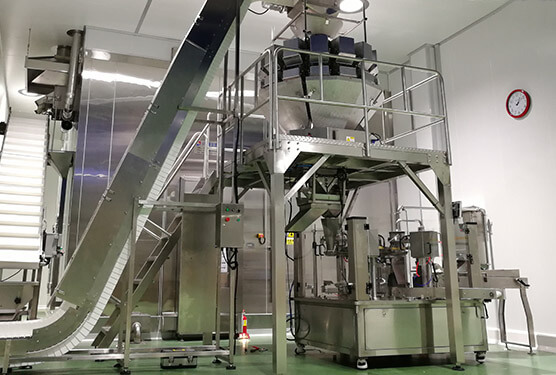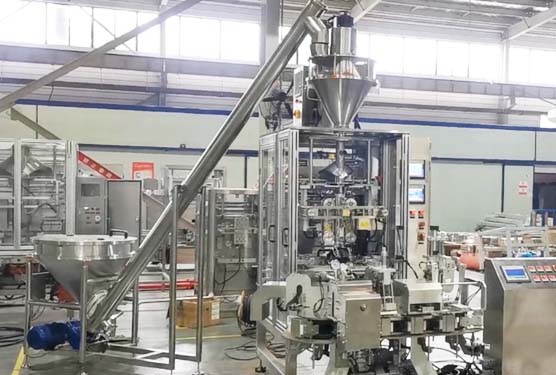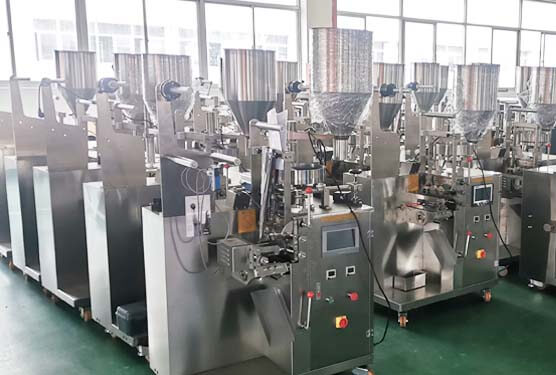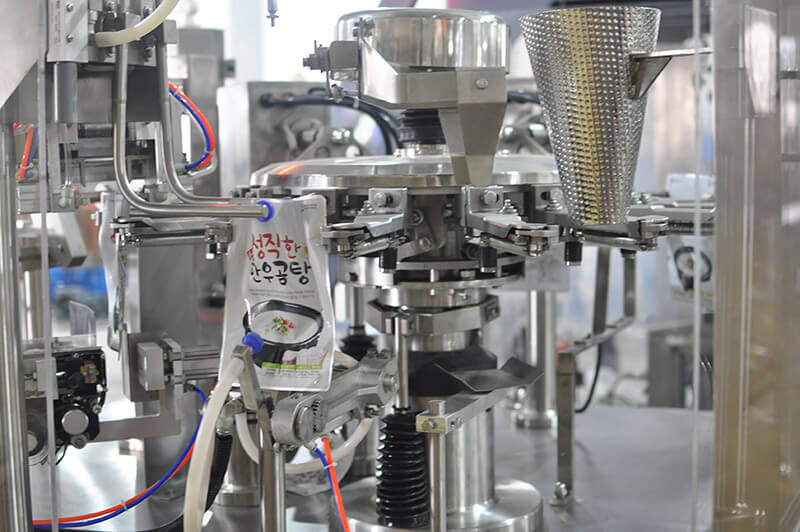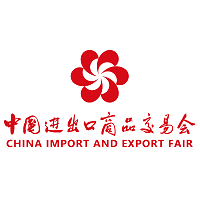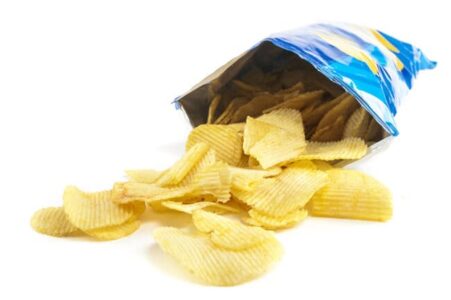Whether you’re packing oil – based, creamy, or sauce dressings, and whether you choose packaging forms like bottles, sachets & stick packs, pouches, cups & tubs. Select the right packaging and machine for your salad dressing business to maintain freshness, leak prevention, and consumer convenience for your customers.
This guide covers everything you need to know about salad dressing packaging, including packaging types, material considerations, and the best machines for the job.
1. Why Is Proper Salad Dressing Packaging Important?
The right packaging plays a crucial role in maintaining product quality, shelf life, and customer satisfaction. Salad dressings can be challenging to package due to their varying viscosity and oil content, requiring specialized machinery.
✔ Prevents Leakage – High-quality seals ensure no spills or drips.
✔ Extends Shelf Life – Protects against oxidation, moisture, and contamination.
✔ Enhances Convenience – Easy-to-use packaging improves customer experience.
✔ Supports Branding – Unique packaging can make a product stand out on store shelves.
💡 Fact: Many salad dressings contain oil and vinegar, which can separate over time. Proper packaging helps maintain product integrity.
2. Popular Salad Dressing Packaging Types
Salad dressings come in various packaging formats, depending on usage, target market, and production scale.
1. Bottles (Plastic or Glass)
🔹 Best For: Retail and bulk packaging.
🔹 Advantages:
✔ Durable and easy to store.
✔ Ideal for creamy and thick dressings (e.g., ranch, Caesar).
✔ Can include flip-top caps, pumps, or screw caps for dispensing.
✅ Pro Tip: Glass bottles provide a premium look and are ideal for organic or gourmet dressings.

2. Sachets & Stick Packs (Single-Serve)
🔹 Best For: Fast food chains, restaurants, travel-size packs.
🔹 Advantages:
✔ Convenient for on-the-go use.
✔ Reduces waste compared to larger bottles.
✔ Great for vinaigrettes and light dressings.
✅ Pro Tip: Stick packs use less material than sachets, making them cost-effective and eco-friendly.

3. Stand-Up Pouches (Flexible Packaging)
🔹 Best For: Larger servings, refills, and squeezable dressings.
🔹 Advantages:
✔ Lightweight and easy to ship.
✔ Offers resealable spouts for easy pouring.
✔ Ideal for bulk salad dressing or family-size servings.
✅ Pro Tip: Use multi-layered pouches with an oxygen barrier to keep dressing fresh longer.

4. Cups & Tubs (Deli-Style & Meal Prep)
🔹 Best For: Meal kits, ready-to-eat salads, and restaurant servings.
🔹 Advantages:
✔ Ideal for dipping sauces and portion-controlled servings.
✔ Works well for thicker dressings like blue cheese or ranch.
✔ Often sealed with foil or plastic lids to prevent leaks.
✅ Pro Tip: Tamper-evident seals can help ensure food safety compliance.

3. Best Materials for Salad Dressing Packaging
Salad dressing packaging must be oil-resistant, leak-proof, and food-safe.
| Packaging Type | Recommended Material | Key Benefits |
|---|---|---|
| Plastic Bottles (PET, HDPE) | Lightweight, shatterproof | Cost-effective, recyclable |
| Glass Bottles | Premium look, non-reactive | Preserves taste, eco-friendly |
| Flexible Pouches (Laminated Films) | Multi-layer barrier | Keeps oil-based dressings fresh |
| Sachets & Stick Packs | Foil or plastic laminate | Ideal for single-serve |
| Cups & Tubs | Polypropylene (PP) | Durable, microwave-safe |
✅ Pro Tip: BPA-free plastic is a must for food safety compliance.
4. Choosing the Right Salad Dressing Packaging Machine
Automating your salad dressing packaging process improves efficiency, consistency, and quality. The right salad dressing packaging machine depends on viscosity, production scale, and packaging type.
1. Automatic Bottle Filling Machine
🔹 Best For: Glass or plastic bottles (retail and bulk).
🔹 How It Works:
1️⃣ Pumps or piston fillers dispense a precise amount of dressing.
2️⃣ Bottles move down a conveyor belt for capping and labeling.
3️⃣ Sealed bottles are checked for quality control.
🔹 Features:
✔ Handles thick and thin dressings (e.g., ranch, balsamic vinaigrette).
✔ Works with different cap styles (flip-tops, screw caps, spray nozzles).
✔ Can include labeling and date coding.
✅ Pro Tip: Choose a machine with anti-drip nozzles to prevent messes.

2. Sachet & Stick Pack Machine
🔹 Best For: Single-serve packets (fast food, meal kits).
🔹 How It Works:
1️⃣ Roll-fed film is cut and formed into sachets.
2️⃣ Precise amounts of liquid dressing are filled.
3️⃣ Sachets are sealed, cut, and coded for tracking.
🔹 Features:
✔ High-speed filling (up to 50-100 sachets per minute).
✔ Supports tear notches for easy opening.
✔ Can handle liquid and semi-liquid dressings.
✅ Pro Tip: Multi-lane machines allow filling multiple packets at once, increasing output.
3. Premade Pouch Packaging Machine
🔹 Best For: Stand-up pouches with spouts (family-size dressings).
🔹 How It Works:
1️⃣ A pre-made pouch is placed in the machine.
2️⃣ The dressing is dispensed into the pouch.
3️⃣ The pouch is sealed and labeled.
🔹 Features:
✔ Works with resealable spouts.
✔ Preserves freshness with oxygen barrier packaging.
✔ Can handle various pouch sizes.
✅ Pro Tip: Use a nitrogen flush system to extend shelf life.
4. Cup Sealing Machine
🔹 Best For: Deli-style salad dressings in portion cups.
🔹 How It Works:
1️⃣ Dressing is filled into cups.
2️⃣ A foil or plastic film is heat-sealed on top.
3️⃣ Sealed cups are moved for labeling and packing.
🔹 Features:
✔ Works with various cup sizes (1oz, 2oz, 4oz, etc.).
✔ Provides airtight seals to prevent leaks.
✔ Supports tamper-evident packaging.
✅ Pro Tip: Consider an inline cup filling system for high-volume production.

5. How to Choose the Best Salad Dressing Packaging Machine
| Factor | Considerations | Best Machine Type |
|---|---|---|
| Product Viscosity | Thick (ranch, Caesar) vs. thin (vinaigrette) | Piston filler for thick, pump filler for thin |
| Packaging Format | Bottles, pouches, sachets, cups | Bottle filler, pouch filler, sachet machine, cup sealer |
| Production Volume | Small-scale vs. large-scale | Semi-auto (small), Fully-auto (large) |
| Sealing Requirements | Leak-proof, resealable | Capper for bottles, heat sealer for pouches |
✅ Tip: Ensure the machine is food-grade certified (CE, ISO, GMP).
Conclusion: Selecting the Right Salad Dressing Packaging Solution
Choosing the best salad dressing packaging machine depends on:
✔ Product type (creamy, oil-based, light vinaigrettes).
✔ Packaging format (bottles, pouches, sachets, cups).
✔ Production speed and budget.
📞 Need help choosing a salad dressing packaging machine? Contact HonorPack for expert guidance!

